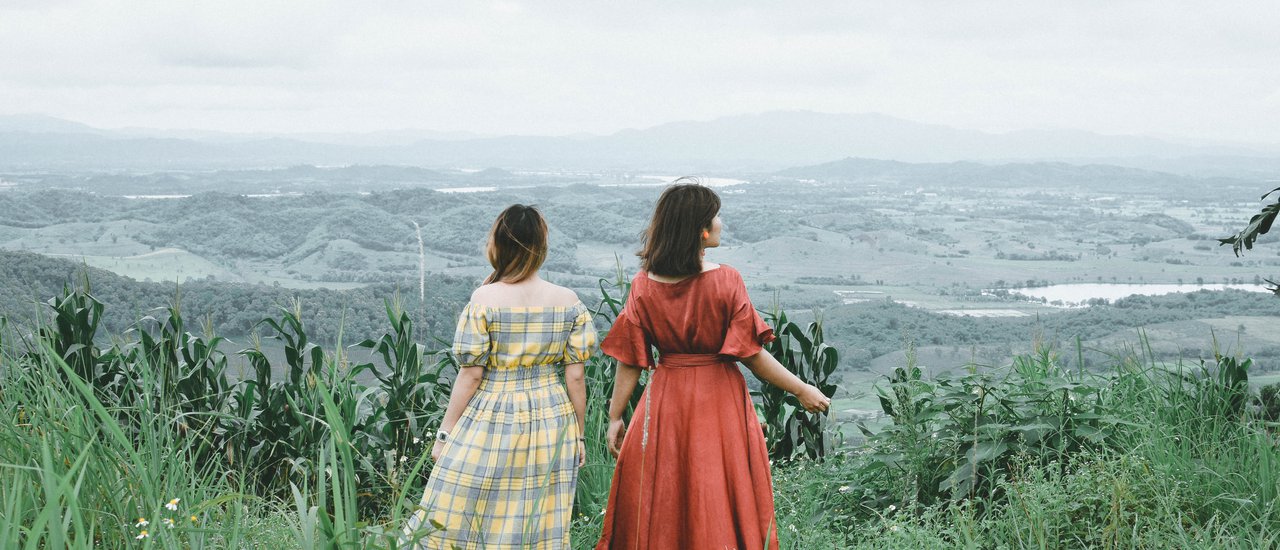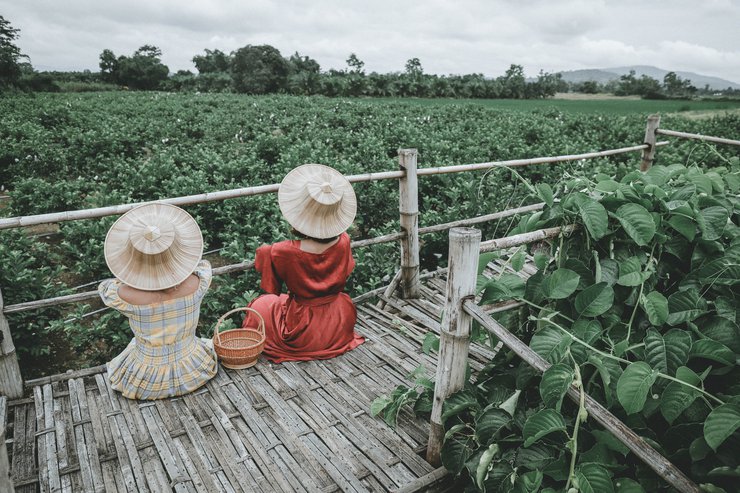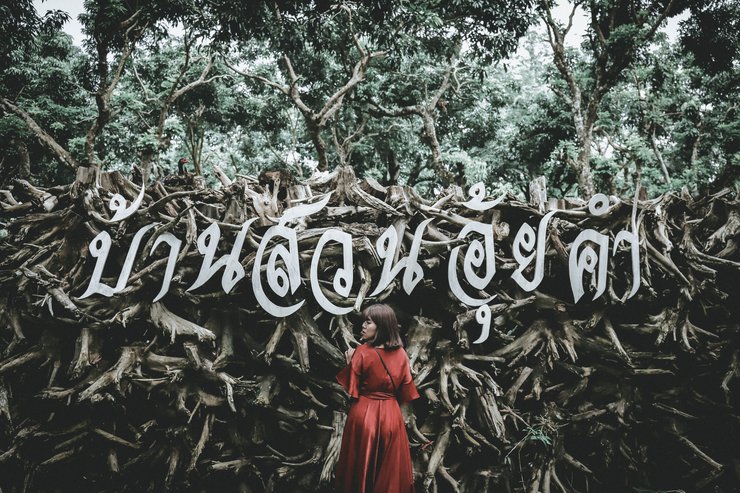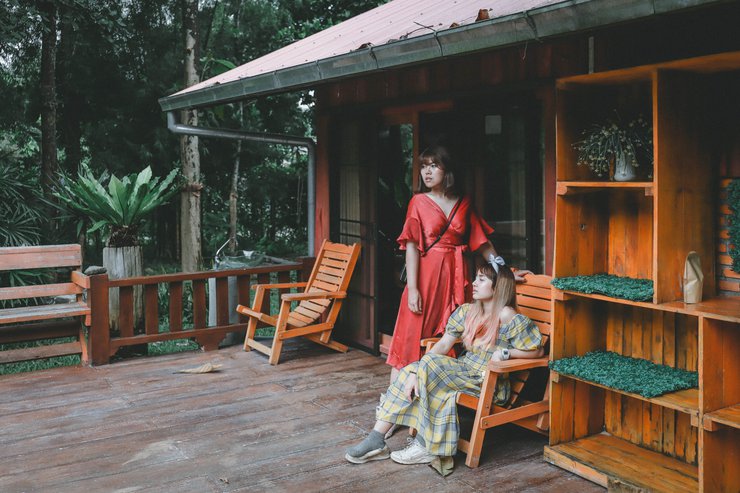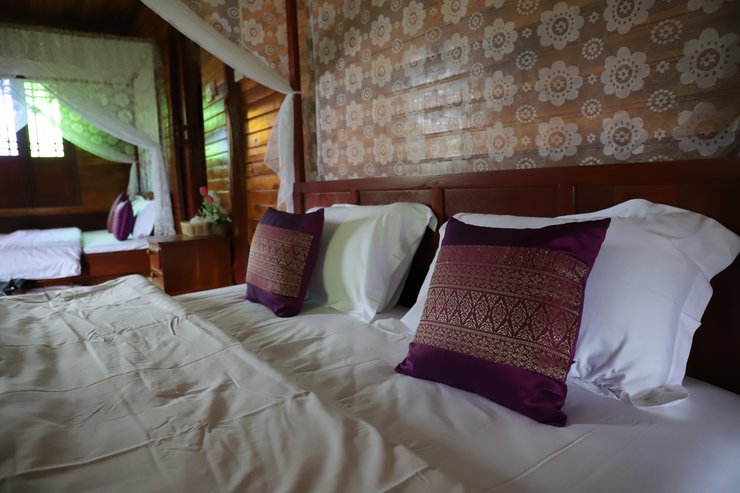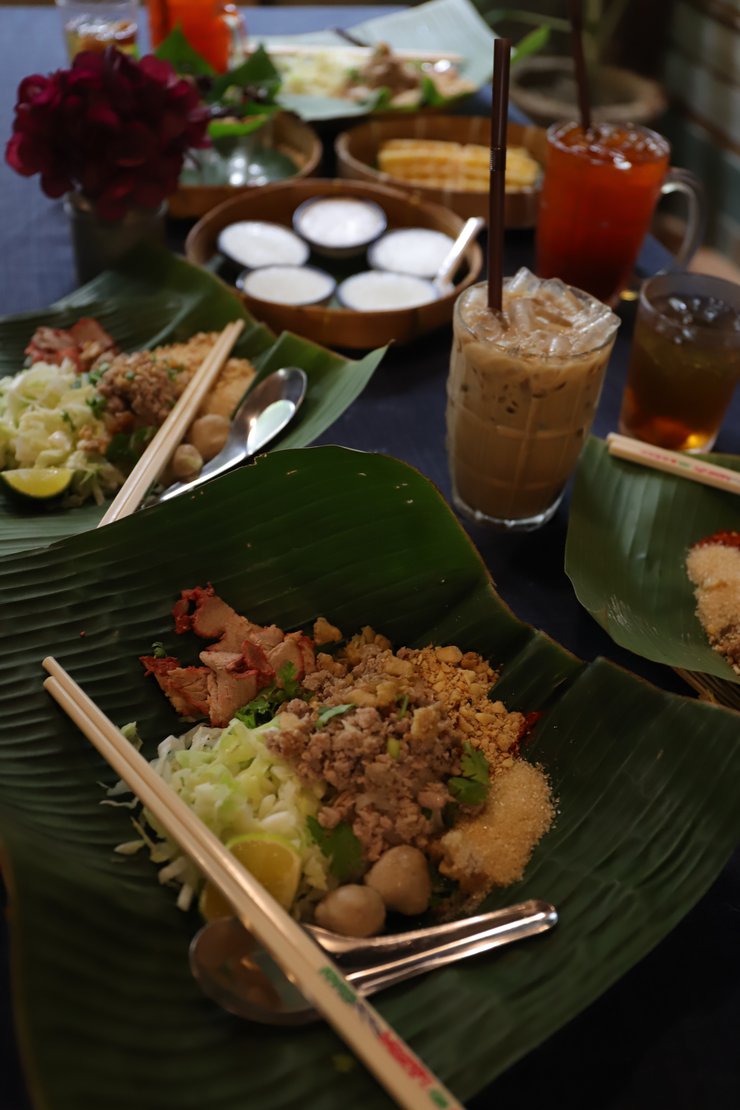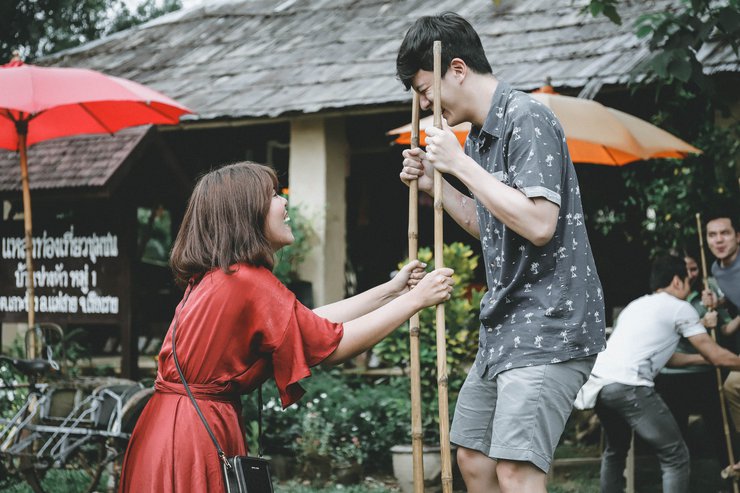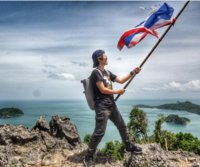As.8 Pang Ha Community: A Rainy Season Challenge in the Northernmost Region of Thailand, Chiang Rai Province
During the holidays, we might plan to relax somewhere. But where would be interesting during this rainy season?
During the rainy season, some people may choose to stay indoors to avoid getting wet. However, we encourage you to reconsider, as we are about to take you on a journey to the northernmost province of Thailand, Chiang Rai, specifically to the Pang Ha community. This experience will leave you feeling refreshed and enamored with the rainy season, just like us.

On this trip, we traveled to the **Pang Ha community**, which we contacted through their Facebook page **"Pang Ha Homestay Community Tourism"**. This allowed us to plan our participation in all of the community's activities for a period of 2 days and 1 night. Although the time may seem short, the activities here are truly captivating. If you're feeling overwhelmed and stressed, take a break and come relax your body and mind here. You don't need to wait for a long weekend or a vacation; just choose a Saturday or Sunday, pack your bags, and get going!
We traveled by plane to save time. Upon arrival in Chiang Mai, we hired a car to take us directly to the Pang Ha community. The journey was incredibly convenient.

Upon arriving at Pang Ha Homestay, I exclaimed, "Wow!" The place was truly impressive.
The homestay at Pang Ha is stunning and will make you forget all about traditional homestays. It's like staying in a luxurious vacation home with a peaceful and simple atmosphere and warm hospitality. This is not an exaggeration, you have to try it yourself.


"Wow! This is a picture of our accommodation. The beauty and cleanliness are top-notch, ten out of ten! There are actually many types of rooms here, including large rooms that can accommodate four people, garden houses, and even chic bunk beds to cater to the needs of visitors. You'll feel like you're in a hotel rather than a homestay!"

Good things start with food.
The first dish we tried was the signature เตี๋ยว โตก ตอง, a menu item available only on Saturdays. It was delicious, worthwhile, and very impressive. We followed it with เมี่ยงคำ and น้ำลำไย, which provided us with energy and refreshment.

The charm of this community lies in the interconnected pathways that link the residential units to various activity zones. This creates a sense of entering another world, where one can embrace a simpler and more fulfilling lifestyle.
We started the activity by making sa paper.
In addition to being a homestay, the Pang Ha community is also a learning center for making sa paper. The villagers here make it their profession and will take turns to help take care of the homestay when there are guests. We were also welcomed by this little gang of tour guides who took us to make sa paper with our own hands, decorating it according to each person's art style, and then hanging it out to dry. All that's left is to wait and collect the results.


While waiting for the mulberry paper to dry, we took a break to enjoy a foot spa. The spa consisted of a simple setup: a tub filled with warm herbal water and a layer of pebbles at the bottom. This allowed us to massage our feet against the stones, providing a relaxing and invigorating experience. The warm water infused with fragrant herbs and the gentle pressure of the pebbles on our feet created a soothing and rejuvenating sensation.


After relaxing our feet, we continued with a gold silk thread facial mask.
This innovative process involves utilizing silkworms to weave their own silk, creating a 100% pure silk sheet. The silkworms are allowed to complete their natural life cycle, transforming into pupae and then butterflies, before laying their eggs. This ensures that the silk retains all its beneficial properties, including sericin. The process is patented and guarantees a high-quality silk sheet.
Sericulture, the cultivation of mulberry trees for silkworms, is a major occupation for the people of Pang Ha. They use the silk to produce silk masks and other products under the brand name CEILK.

The second morning, we woke up feeling hungry. -o-
We decided to try the recommended dishes from the homestay. We were amazed by the menu and...
The restaurant offers a wide variety of both local and fusion cuisine, including: * **Northern Thai specialties:** * **Nam Prik Ong:** A spicy chili paste dip served with fresh vegetables. * **Sai Oua:** A grilled sausage made with pork, lemongrass, and other spices. * **Yum Kra Jeab Daeng:** A spicy salad made with red water spinach, tomatoes, and a peanut dressing. * **Gaeng Yod Ma Praw:** A curry made with young coconut shoots, bamboo shoots, and other vegetables. * **Khao Hom Mali Roy Na Gai:** Fragrant jasmine rice topped with "gai," a freshwater algae that is dried and ground into a powder. It has a salty taste and a strong seaweed aroma. * **Other dishes:** * **Yum Hed Ruam:** A mixed mushroom salad. * **And many more.** The food is just as impressive as the accommodations. Highly recommended!

The first activity we did today made us appreciate the breakfast that gave us energy, because we had to go forge knives!!!
You read that right, we forged knives in front of a hot furnace. At first glance, we smiled to ourselves, thinking it would be easy, just hammering the heated knife to flatten it. But as soon as we held the hammer, we realized it was not easy at all. The blacksmith taught us the steps: heat the iron in the furnace until it glows red, then quickly hammer it into shape. Want to know how difficult it is? Come and try it yourself!

While we waited for our friend to forge the iron, the kind auntie prepared "Khao Soi Noi," a local dish similar to "Pak Mor," for us to enjoy during the knife-making process. She even generously allowed us to participate in the preparation from the very beginning. It was so delicious that we kept eating until the auntie packed some for us to take away.

Leaving the house with a knife, we stopped to take some beautiful photos at the Pang Ha five-way relaxation point on the banks of the Mekong River. This is a border crossing point to Burma. Here, we were able to get up close and personal with the way of life of the Thai and Burmese people who cross the Mekong River every day.
Unable to reach the other side by standing and watching, we asked a Burmese brother to take us across the river by boat. While he was steering the boat, we took the opportunity to capture some cool photos to share with everyone.

Below is a picture of the Burmese brother who took us across the river. Let me tell you, he has a lot of inner model. We didn't tell him to do it. This is his natural driving position. What I noticed is that Thai and Burmese people are close like brothers and sisters. Even though they speak different languages and sometimes don't understand each other, everyone is friendly and ready to help each other.

We then traveled to the Gimju Guava Garden, and I must say, I absolutely loved it! We had a blast picking guavas straight from the trees, eating them fresh, and even juicing them. And the best part? No matter which angle you took a picture from, it looked like something out of a magazine. It was truly breathtaking.


After leaving the Kim Joo French Garden, we headed towards Doi Sa Ngo, a viewpoint overlooking the borders of the three countries. This mountain is also home to the first Akha tribe settlement. Without further ado, we hopped in the car and drove off.
However, the journey was not as easy as we had anticipated. As we arrived during the rainy season, the road leading up to the mountain was muddy and challenging to navigate. Despite the occasional thrill of slipping and sliding, the expertise of our local guides ensured our safe ascent to Doi Samoe.


Upon reaching the summit, we were truly awestruck. The panoramic views stretched 360 degrees, offering breathtaking vistas in every direction. The pristine air invigorated our senses, and we savored the moment, allowing our bodies to absorb the pure oxygen of nature.

In addition to the stunning views, we had the opportunity to witness a traditional performance by the Akha people. Everyone was friendly and welcoming, so much so that we couldn't resist joining in the dancing. As a result, we have some adorable photos to share with you.

The provided text is empty. There is nothing to translate.
Please provide the text you want me to translate.
Visiting Chiang Rai, one cannot miss the experience of the fresh air amidst the rice fields. Here, numerous restaurants and cafes offer stunning views of the paddy fields, allowing for complete immersion in the serene atmosphere. Especially after a fresh rain, the scent of damp earth mingles with the fragrance of ripening rice, creating an intoxicating aroma. The slow-moving mist adds to the ethereal ambiance, as if time itself stands still, inviting visitors to relax and breathe deeply.


This section describes the various activities and scenic views available during the upcoming winter season. For those interested in participating, inquiries can be directed to the Pang Ha Homestay community tourism initiative (https://www.facebook.com/panghahomestay/). The initiative offers a range of packages catering to individual preferences and group sizes, ensuring a convenient and enjoyable experience for all.
The program starts with a 2-day, 1-night itinerary. If you wish to stay longer, you can inform us and we will be happy to accommodate your request. The price includes all activities and accommodation, allowing you to manage your budget effectively before your trip.
In conclusion, we encourage everyone to experience a homestay in our country. Immerse yourselves in the local way of life, and discover the charm and simplicity of our communities. This is an opportunity to connect with people and places that are often overlooked in the hustle and bustle of city life.
Then you will know that this travel experience will be unforgettable.
Ms.Hoye
Wednesday, February 26, 2025 8:49 PM

